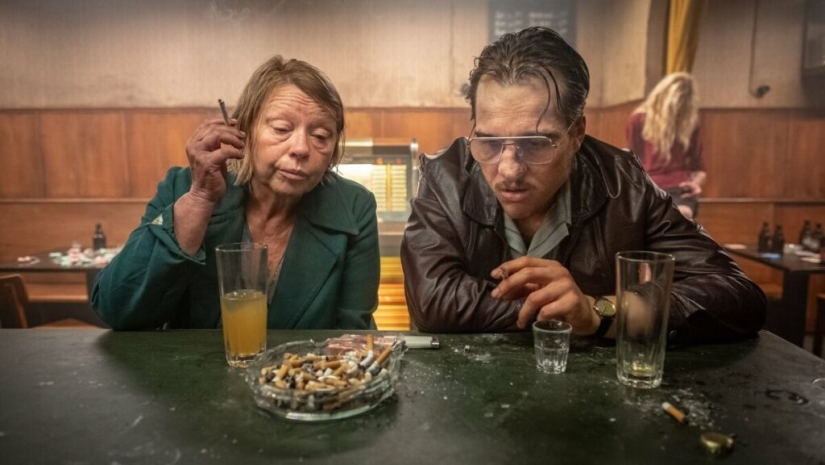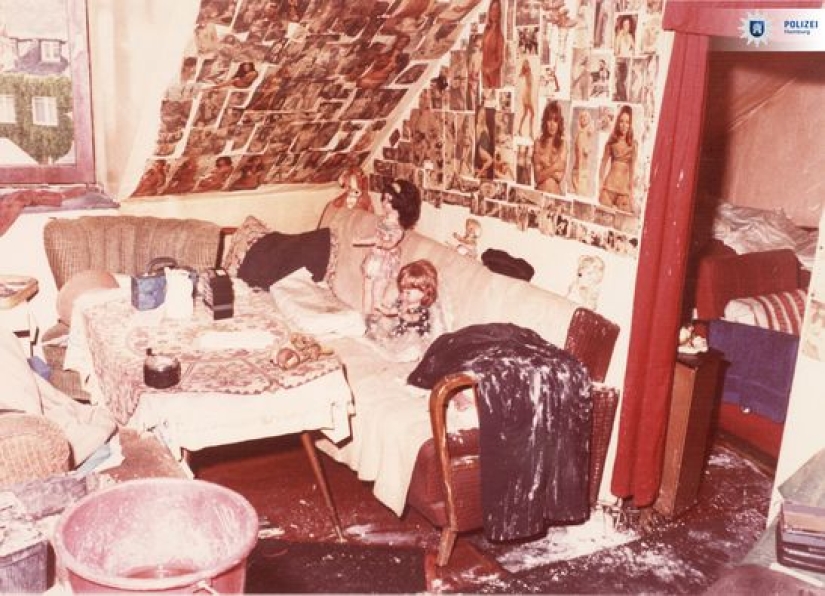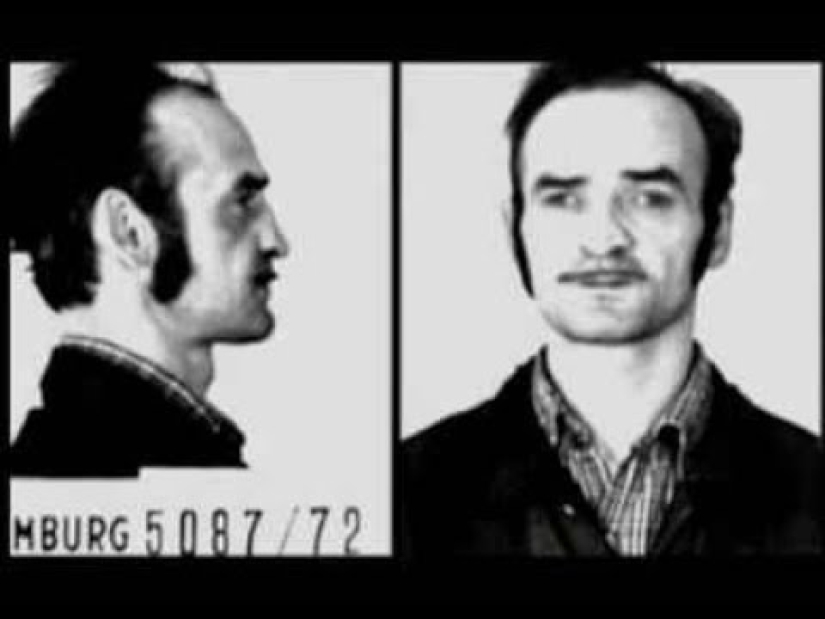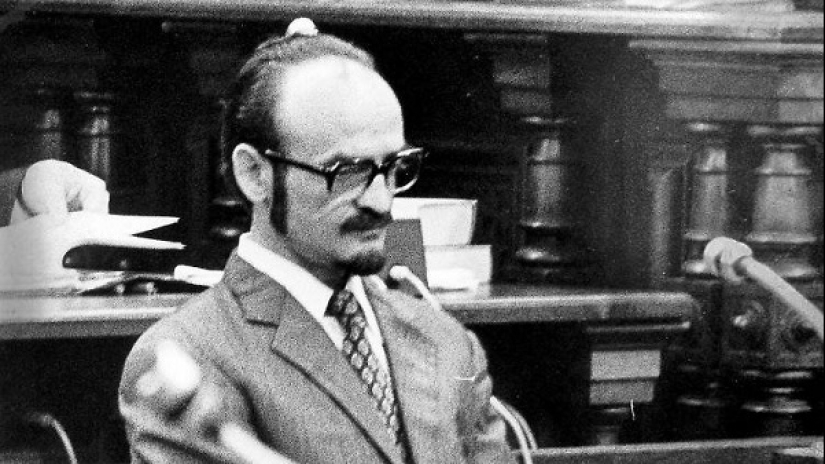Fritz Honka - The Story of Hamburg's Jack the Ripper
Maniacs rarely look like monsters. In everyday life, they are ordinary people, sometimes even pleasant to talk to. It is this trait that helps serial killers gain the trust of their victims and complicates their capture. But there are exceptions. For example, Fritz Honka, who killed women in the 1970s in Hamburg, Germany. He was ugly, unkempt and an alcoholic. Despite this, Honka managed to win the trust of his victims thanks to their own craving for alcohol.

Fritz Honka was born in 1935 in Leipzig, in a large family of nine children. During the war, his father was sent to a concentration camp. He managed to survive, but his health was hopelessly undermined and he could only do light, low-paid work. He got a job as a stoker and received a meager salary.

Honke Sr. became an alcoholic out of desperation and died in 1946. His mother worked as a cleaner and could not support the family on her own. So she sent several children, including Fritz, to orphanages. Life in this institution had a serious impact on the child's psyche. Violence, including sexual violence, flourished within the walls of the orphanage.
As an adult, Fritz tried to find his way in life. He began an apprenticeship as a bricklayer, but had to give up the profession due to an allergy to cement. In search of a better life, Honka was able to move to capitalist West Germany and settled in Hamburg. It seemed that life was starting to improve. The man finally found work at a shipyard and even got married.

As soon as Fritz had money, he began drinking, and soon his wife left him. He tried to improve his personal life, but to no avail. Short, hunchbacked, with a nose broken several times and hands gnarled from rheumatism, Honka scared women away. In addition, Fritz developed alcoholism, which did not add to his attractiveness.
Fritz Honka could only count on the attention of the most battered prostitutes. But even they sometimes refused to sleep with the eternally drunk freak, even for money. Soon, problems with alcohol and worsening chronic diseases forced the man to leave the shipyard. Honka could not find a new job - potential employers were scared off by his appearance and strange behavior. As a result, Fritz, already desperate and starting to starve, was hired by the Shell company as a guard.
Fritz Honka committed his first murder in December 1970. The victim was 42-year-old Gertrud Breuer, a hairdresser who worked as a prostitute. Fritz met the woman in a bar and then invited her to continue their conversation at his home. After the party, Honka wanted to have sex with Gertrud, but the woman refused, making a crude joke about his appearance.

Fritz became enraged and began to strangle Breuer. When he realized that the woman was dead, he sawed her body into pieces with a hacksaw, put them in bags and carried them out of the house. After making several trips, Honka hid the remains of the victim in different parts of the Altona district. The killer did not experience the slightest remorse or even basic emotions. This surprised and delighted him. The hunchback felt like a superior being, and now he could not be stopped.
The police found Breuer's remains, but the investigation reached a dead end. Impunity gave Fritz confidence. Despite this, the maniac managed to control himself for the next 4 years. He lived an ordinary life - worked, drank and looked for women willing to sleep with him, at least for money.

In August 1974, Fritz met 54-year-old prostitute Anna Beuschel. She did not refuse Honke sex, but he felt that she did not like him. The man strangled Anna without hesitation and dismembered the body. He packed the remains in bags, but was afraid to take them outside and hid them at home.
In December of that same 1974, Honka killed 57-year-old Frieda Roblik, and just a month later, in January 1975, 52-year-old Ruth Schult. The killer hid the sawn-up bodies of the victims in his apartment. The disappearance of three middle-aged prostitutes went unnoticed. Because of this, the Hamburg police had no idea that a serial killer had appeared in the city.

Over time, the victims' bodies, packed in bags, began to emit an unimaginable stench. Neighbors repeatedly complained about the smell coming from Fritz Honka's apartment, but the homeowners did nothing. The maniac himself went into hiding after the murder of Schult. He no longer brought women home for fear that they would notice the smell of decomposition.
Chance helped catch the maniac. One day, when Fritz was not at home, a fire broke out in his entryway. The killer's apartment was also damaged by the fire, so the firefighters had to break down the doors and enter the premises. There they found a pile of bags with rotting flesh, in which they easily recognized parts of human bodies.

The firefighters called the police. During the search, they found three corpses and the tools the maniac used to dismember them. Fritz was arrested. At first, he categorically denied involvement in the murders, but then confessed. Investigators questioned the workers and regulars of the bar "At the Golden Glove", where Honka was looking for victims. This is how they managed to find out the names of the victims. By the way, the bar became a landmark after this and was even nicknamed "Honka's Diner".
At the trial, the man could not explain the motive for his crimes. He only repeated: “I had to kill them! Why? I don’t know! I just had to.” Despite the gravity of his crimes, Fritz Honka did not receive a severe punishment. The death penalty was abolished in the FRG in 1949, and the killer was sentenced to only 15 years. The man was found to have serious mental problems, and after prison he was sent to a psychiatric clinic, where he remained until 1993.

After his release, Honka changed his name and became Peter Jensen. The Hamburg Jack the Ripper spent the last years of his life in a nursing home in Scharbeutz. He died of a heart attack in 1998. The staff of the institution where the maniac lived said that the old man was haunted by nightmares. He constantly smelled decomposition and saw the ghosts of his victims.
The writer Heinz Strunk wrote a book about the maniac, The Golden Glove. In 2019, German director Fatih Akin made a film of the same name based on the novel.
Recent articles

On the eve of the New Year, a magical atmosphere reigns in every house — everything is hung with shiny tinsel, there is an ...

Motherhood significantly changes a woman's body. But there are more profound changes affecting the nature and Outlook. Reflected in ...

Some people have genetic abnormalities that make their appearance unique. These body features are usually inherited from parents, ...